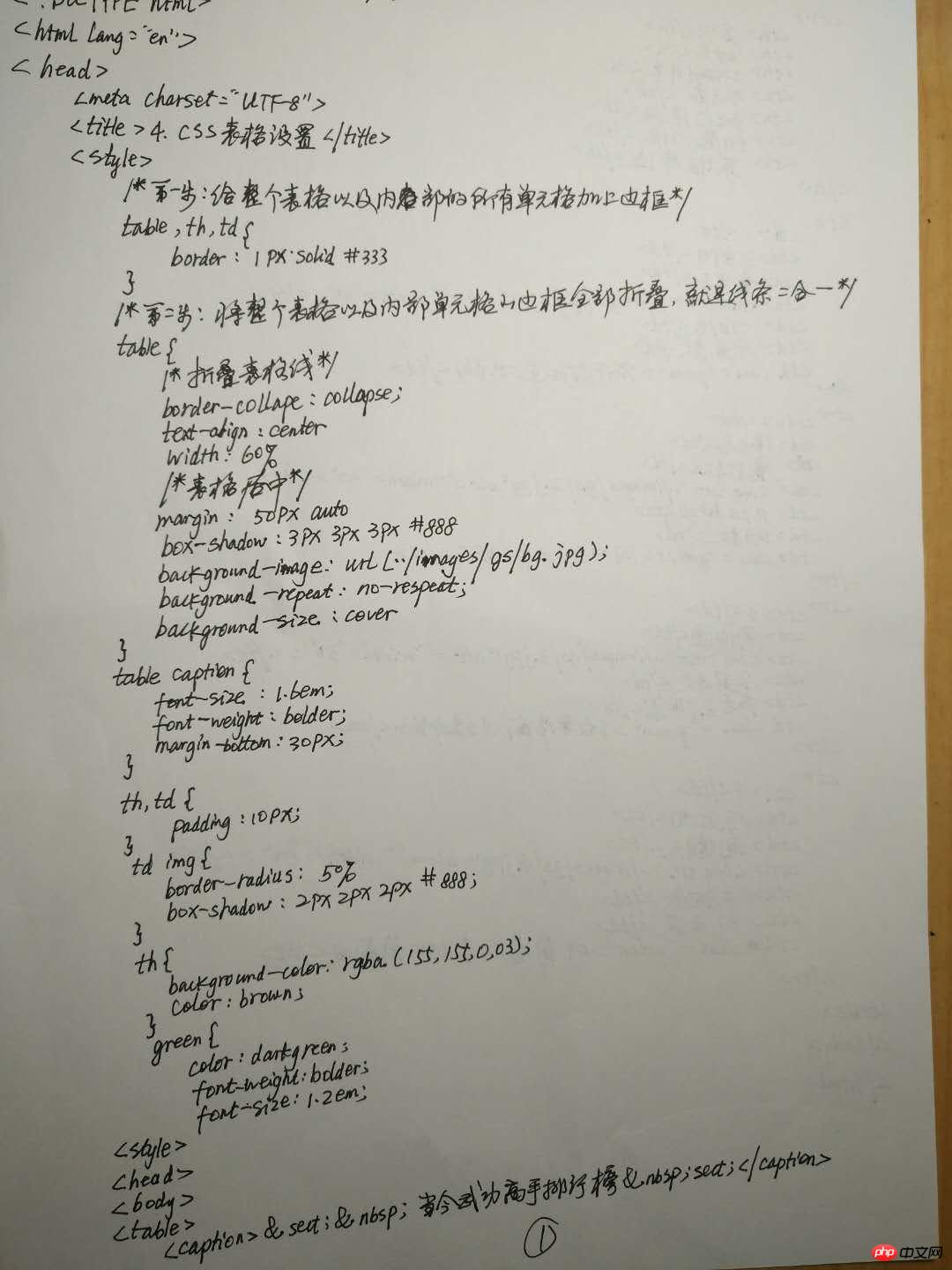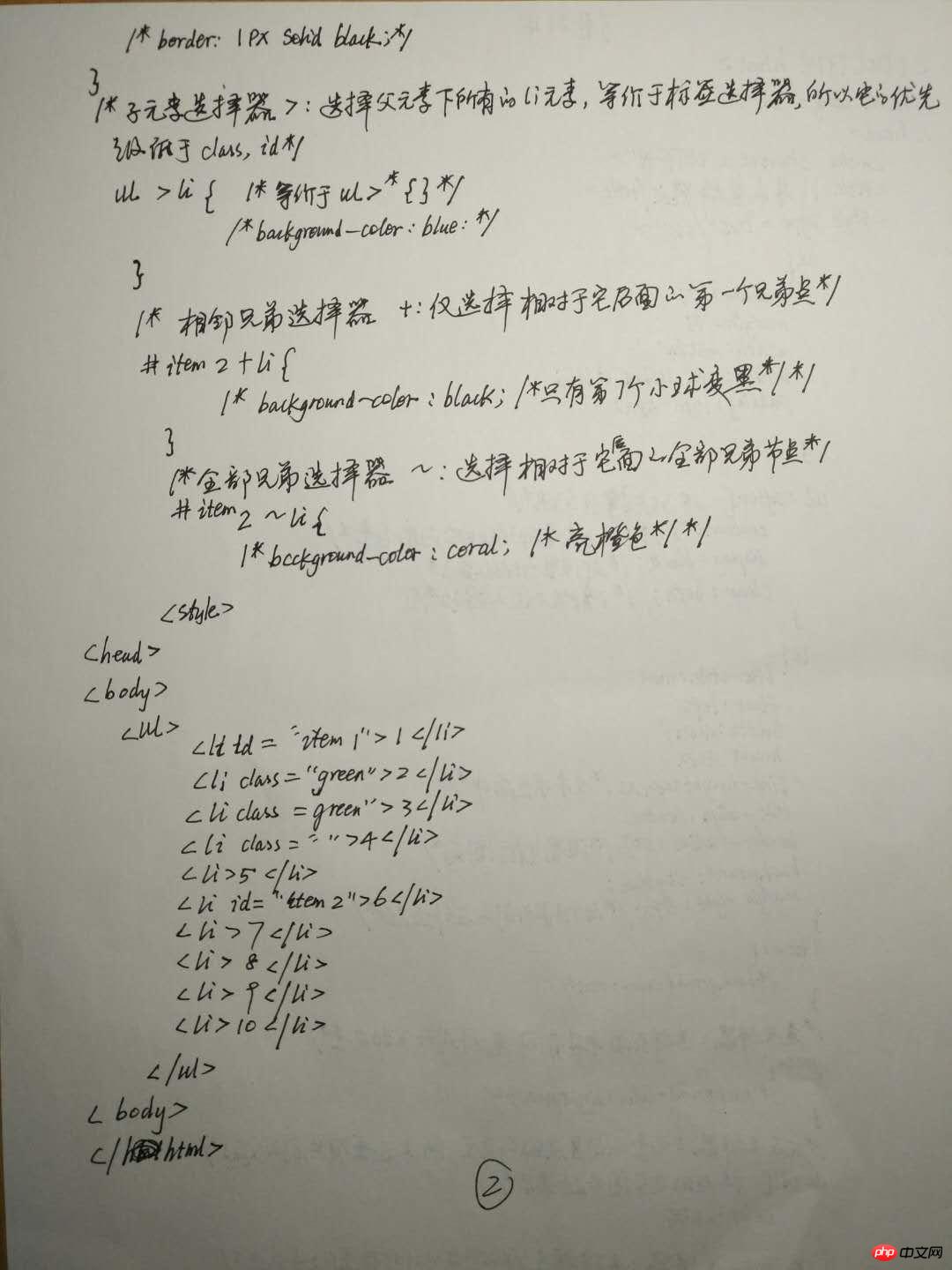Correction status:Uncorrected
Teacher's comments:



通过类选择器:选择页面中具有同一类样式的全部元素;通过父子选择器:元素之间是层级的关系,所选元素有共同的父级;通过通配选择器:选择指定父级下面的所有层级的元素;通真抓实干子元素选择器 : 选择父元素下所有的li元素,等价于标签选择器,它的优先级低于class;通过相邻兄弟选择器 +:仅选择相对于它后面的第一个兄弟节点;通过全部兄弟选择器 ~ :选择相对于它后面的全部兄弟节点,这些都可以达到基本选择器所要达到的功能。
<!DOCTYPE html>
<html lang="en">
<head>
<meta charset="UTF-8">
<title>1.基本选择器</title>
<style type="text/css">
/*元素选择器*/
ul {
padding: 0;
margin: 0;
width: 450px;
border: 1px dashed #666;
padding: 10px 5px;
}
ul:after { /*子块撑开父块*/
content:''; /*在子元素尾部添加空内容元素*/
display: block; /*并设置为块级显示*/
clear:both; /*清除二边的浮动*/
}
li {
list-style: none; /*去掉默认列表项样式*/
float: left; /*左浮动*/
width: 40px; /*设置宽度*/
height: 40px; /*设置高度*/
line-height: 40px; /*文本垂直居中*/
text-align: center; /*文本水平居中*/
border-radius: 50%; /*设置边框圆角*/
background: lightgreen; /*背景色天蓝*/
margin-right: 5px; /*每个球之间的右外边距*/
}
/*id选择器:选择页面中唯一的元素,推荐同一个id标识符只允许用一次*/
#item1 {
/*background-color: red;*/
}
/*类选择器:选择页面中具有同一类样式的全部元素*/
.green {
/*background-color: lightgreen;*/
}
/*父子选择器:元素之间是层级的关系,所选元素有共同的父级*/
ul li { /*层级关系用空格表示*/
color: white;
}
/*通配选择器:选择指定父级下面的所有层级的元素*/
ul * {
/*border: 1px solid black;*/
}
/*子元素选择器 >: 选择父元素下所有的li元素,等价于标签选择器,所以它的优先级低于class,id*/
ul > li { /*等价于: ul > * {} */
/*background-color: blue;*/
}
/*相邻兄弟选择器 +:仅选择相对于它后面的第一个兄弟节点 */
#item2 + li {
/*background-color: black; /*只有第7个小球变黑*/*/
}
/*全部兄弟选择器 ~ :选择相对于它后面的全部兄弟节点 */
#item2 ~ li {
/*background-color: coral; /*亮橙色*/*/
}
</style>
</head>
<body>
<ul>
<li id="item1">1</li>
<li class="green">2</li>
<li class="green">3</li>
<li class="">4</li>
<li>5</li>
<li id="item2">6</li>
<li>7</li>
<li>8</li>
<li>9</li>
<li>10</li>
</ul>
</body>
</html>点击 "运行实例" 按钮查看在线实例
根据属性名来选择:例如id属性,等价于: li[id],该还可以根据属性名与值来选择:例如选择class="green"的元素。
选择class属性值中包括指定单词的元素例如:li[class ~= "red"] ;选择以'ph'字母开头的class类样式元素,还有选择以's'结尾的类样式元素。通过这些,都可以达到属性选择器所要达到的效果。
<!DOCTYPE html>
<html lang="en">
<head>
<meta charset="UTF-8">
<title>2.属性选择器</title>
<style type="text/css">
/*元素选择器*/
ul {
padding: 0;
margin: 0;
width: 450px;
border: 1px dashed #666;
padding: 10px 5px;
}
ul:after { /*子块撑开父块*/
content:''; /*在子元素尾部添加空内容元素*/
display: block; /*并设置为块级显示*/
clear:both; /*清除二边的浮动*/
}
li {
list-style: none; /*去掉默认列表项样式*/
float: left; /*左浮动*/
width: 40px; /*设置宽度*/
height: 40px; /*设置高度*/
line-height: 40px; /*文本垂直居中*/
text-align: center; /*文本水平居中*/
border-radius: 50%; /*设置边框圆角*/
background: lightblue; /*背景色天蓝*/
margin-right: 5px; /*每个球之间的右外边距*/
}
/*根据属性名来选择:例如id属性*/
*[id] { /*等价于: li[id]*/
/*background-color: red;*/
}
/*根据属性名与值来选择:例如选择class="green"的元素*/
li[class="orange"] {
/*background-color: lightgreen;*/
}
/*选择class属性值中包括指定单词的元素*/
li[class ~= "green"] {
background-color: brown;
}
/*选择以'ph'字母开头的class类样式元素*/
li[class ^= "ph"] {
background-color: red;
}
/*选择以's'结尾的类样式元素*/
li[class $= "s"] {
background-color: lime; /*青绿*/
}
/*选择属性值中包括指定字母'e'的类样式元素:;*/
li[class *= "e"] {
background-color: blue; /*234背景为黄绿色*/
}
</style>
</head>
<body>
<ul>
<li id="item1">1</li>
<li class="green">2</li>
<li class="green red">3</li>
<li class="red">4</li>
<li>5</li>
<li id="item2">6</li>
<li class="php">7</li>
<li class="php css">8</li>
<li>9</li>
<li>10</li>
</ul>
</body>
</html>点击 "运行实例" 按钮查看在线实例


总结:学习了下面的内容:
1. css中的基本术语;
2. CSS的三种引入方式;
3.基本选择器;
4.属性选择器;
5. 了解了伪类选择器。
通过学习更清楚地了解到,html只是标签,对网页样式不够完善,而且通过学习CSS,明白了,可以把CSS当作是模式与标签分离,以前还真不了解,再看了一遍上课录像,心里明了,并且理解更深。